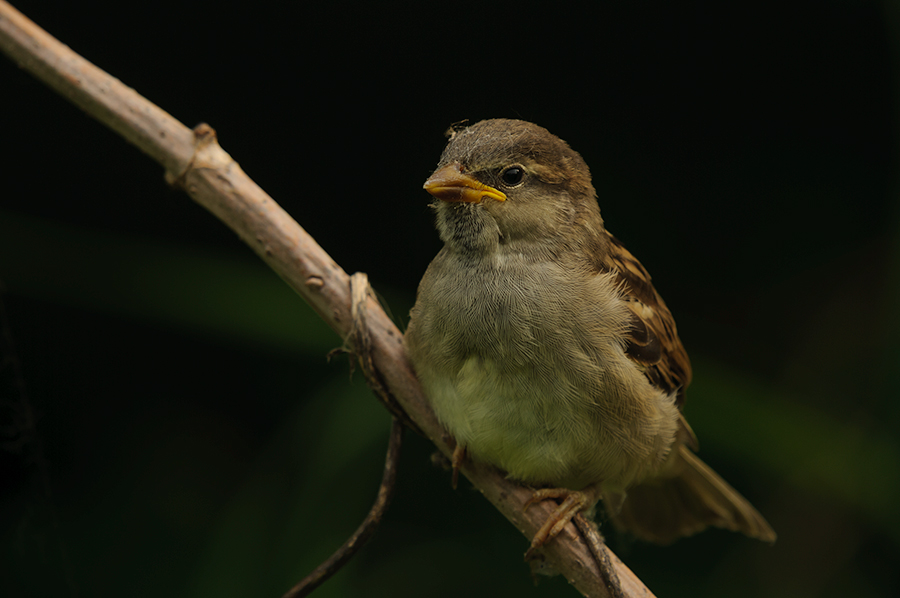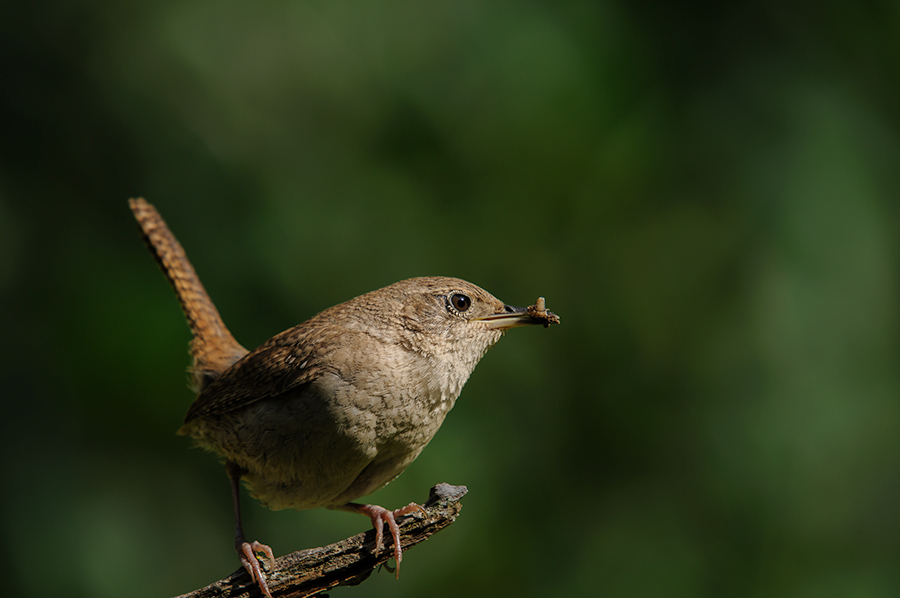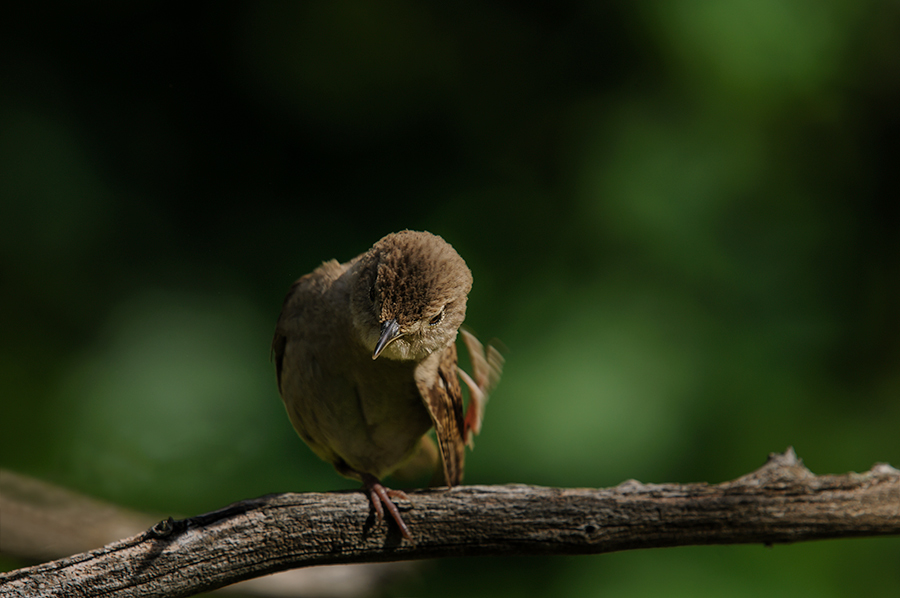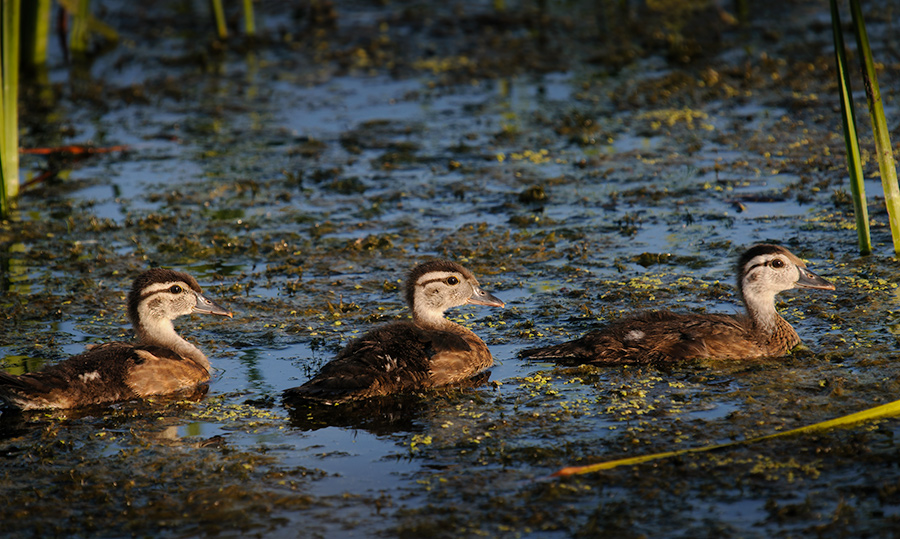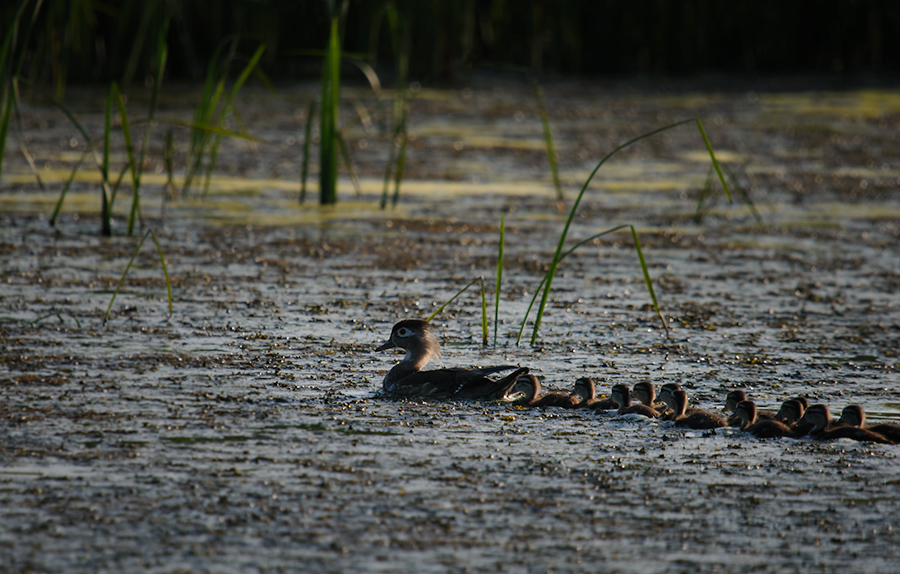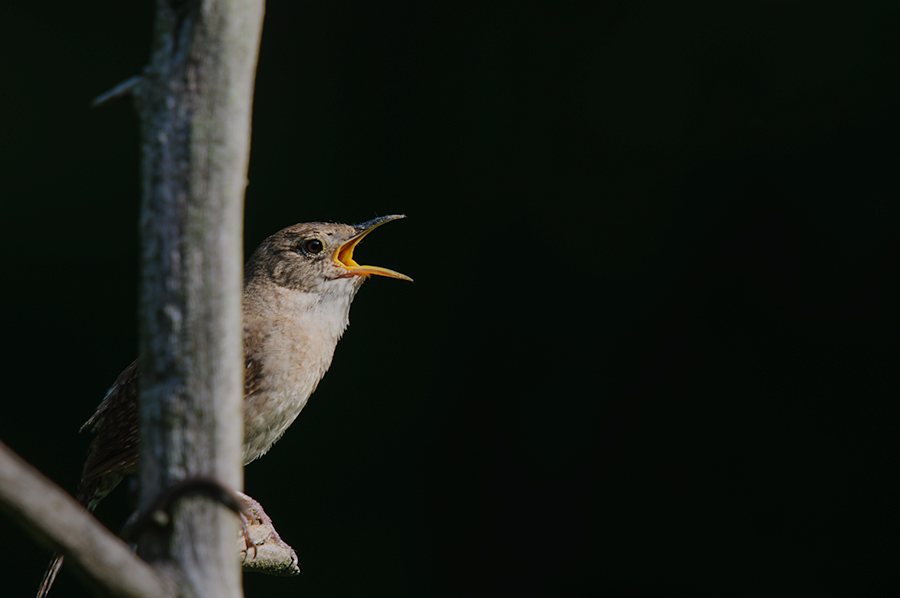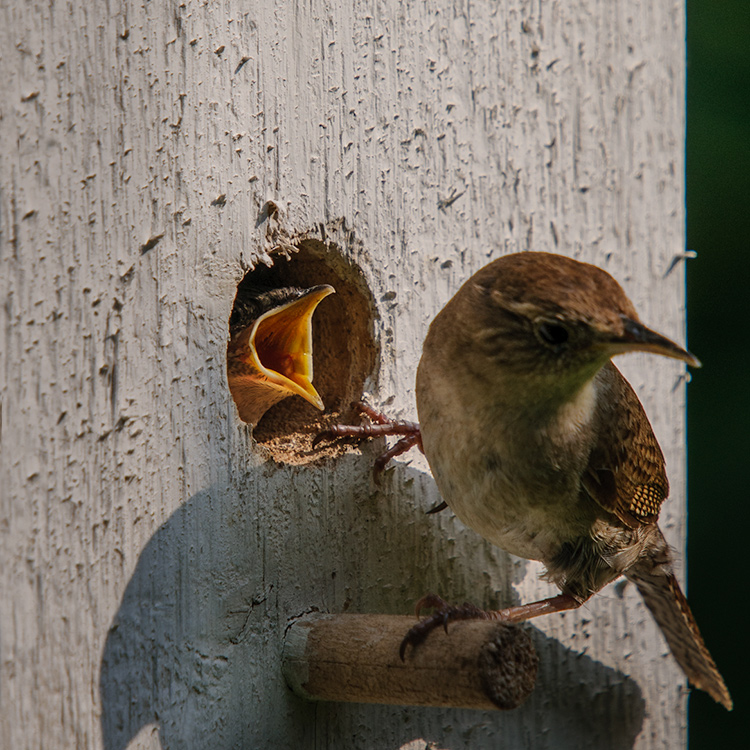
There is a lot going on in the woods here again. Many young birds try to find their way around. The House Wrens from our second nest box left their nest finally Saturday morning. One of them found its way into our house but after five minutes I was able to catch the little guy and release him into the wild again. The male wrens are in full courtship again and try to impress a female by singing near any possible nest place. I have never seen the wrens using the same nest for their second brood and we will see what they do this year.

This is a young House Sparrow and the parents were nearby, still taking care for the offspring. It is the first time that we had House Sparrows having a nest somewhere close by.

I was happy to see five juveniles hopping around their parents on the ground today. This photo was made while a big thunderstorm moved into our area and it became quite dark. The fill flash makes the important, story telling parts standing out, the wide open beak and the eye of the young sparrow, as well the bill of its mother that stuffs the food into the throat…
(P.S.: In the first version of this blog post I said the sparrows in the last image were Chipping Sparrows. A closer look at some of my other photos made me recognize my mistake. They were all House Sparrows.)




